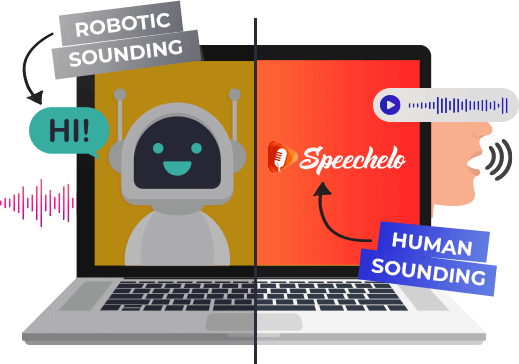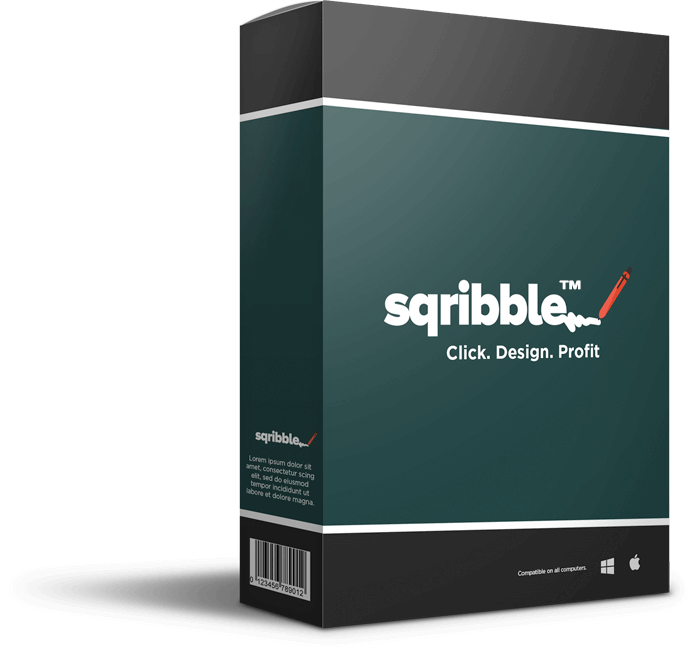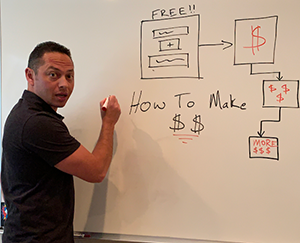Win by Focusing on Your Core Users written by Jarret Redding read more at Duct Tape Marketing
The Duct Tape Marketing Podcast with Shane Murphy-Reuter In this episode of the Duct Tape Marketing Podcast, I interviewed Shane Murphy-Reuter, President of Go-To-Market at Calendly. Calendly, best known for revolutionizing scheduling software, is now redefining its space by expanding deeper into relationship management and SMB tools without losing sight of its core value: simplifying […]
Win by Focusing on Your Core Users written by Jarret Redding read more at Duct Tape Marketing
The Duct Tape Marketing Podcast with Shane Murphy-Reuter
In this episode of the Duct Tape Marketing Podcast, I interviewed Shane Murphy-Reuter, President of Go-To-Market at Calendly. Calendly, best known for revolutionizing scheduling software, is now redefining its space by expanding deeper into relationship management and SMB tools without losing sight of its core value: simplifying time.
During our conversation, Shane shared the behind-the-scenes strategy behind Calendly’s evolution—from a simple time management tool to an intelligent, AI-powered business automation platform. As the company scales, its unwavering focus on serving solopreneurs, SMBs, and customer-centric roles like sales and coaching has set it apart in a saturated SaaS market. Shane emphasized the importance of aligning sales, marketing, and customer experience—a key piece of Calendly’s GTM strategy that supports sustainable SaaS growth.
Key Takeaways:
-
Customer Obsession Wins: Calendly’s success is rooted in its deep understanding of time-sensitive professionals like coaches, therapists, and salespeople—its most fervent users.
-
Grow Without Diluting: Rather than chasing every trend, Calendly avoids becoming a “one-trick pony” by strategically expanding within its strongest customer base.
-
Enterprise Can Still Be Personal: Even as it moves into enterprise scheduling, Calendly maintains the simplicity and flexibility that made it popular with individuals.
-
Smart Product Expansion: By anchoring new offerings in its scheduling core and enhancing them with AI, Calendly innovates while staying true to its mission.
-
Blending Sales Models: Shane discussed merging product-led growth with a tailored sales approach—ensuring that customers get value whether they click “buy now” or engage a sales rep.
-
Category Creation + Innovation: Calendly isn’t just a tool; it’s shaping how modern professionals manage relationships and time—key pillars of any successful business.
Chapters:
- [00:09] Introducing Shane Murphy-Reuter
- [00:51] Extending Your Core Business
- [04:47] How Hyperfocus Protects Your Business
- [06:51] Find your Unique Advantage
- [10:28] Messaging for Clients with Different Needs
- [15:05] Shifting Mindset to Deal with Growth
- [17:00] Incentivizing Sales Teams
- [19:00] How Will AI Effect Scheduling Software
More About Shane Murphy-Reuter:
John Jantsch (00:00.93)
Hello and welcome to another episode of the Duct Tape Marketing Podcast. This is John Jantsch. My guest today is Shane Murphy-Reuter. He’s the president and go-to-market. I guess you just call that GTM, don’t you? At Calendly, the platform helping individuals, teams, and organizations create better meeting experiences by simplifying complex scheduling. He’s focused on driving brand awareness and demand by ensuring alignment between sales.
marketing and CX. So Shane, welcome to the show.
Shane Murphy-Reuter (00:32.607)
Great to be here. Yes, we shorten it to GTM, but call it whatever you want. Yeah, no, it’s awesome to be your big fan of the show. So great to talk.
John Jantsch (00:41.07)
Thank you. So I’m going to talk about, I’m going to ask this question in the context of Calendly, but I think that this applies really to a lot of businesses out there. I Calendly started as a small idea of a technology for scheduling, just scheduling. And it’s certainly grown to something much bigger. That’s something that I think happens to a lot of companies you want to talk a little bit about. I know you’re
You haven’t been there from the beginning, but you want to talk a little bit about the evolution of that thinking in Calendly?
Shane Murphy-Reuter (01:13.087)
Yeah, of course. Well, I’ve actually only been at Calendly now, I think four months. I like to write it down, know, the expectations are lower. And so, yeah, I haven’t seen the journey from inside, but actually I’ve known Tope for, who’s the CEO of Calendly for about five or six years. You know, I’ve been very much watching it from the sidelines. And I would say also, if you look at my background, the companies that I tend to join are at a very similar stage to Calendly where
they’ve invented some new technology to solve some sort of pain point for a customer type and then have that exponential growth when they sort of like crack the market a little bit to get that product market fit. And then they start to think about, where maybe growth is starting to slow a little bit in that original market and where to go from here. And I think Calendly has been on that journey. Originally,
John Jantsch (01:51.778)
Mm-hmm.
Shane Murphy-Reuter (02:03.561)
we solved just that scheduling problem, that one problem around how do two people schedule meetings together. And it’s been very, very successful. But now the question is, well, how do you extend from here? And I think a lot of companies get that wrong, frankly. Like think there’s broadly two paths, right? You either take the technology that you’ve built and apply it to different markets.
John Jantsch (02:28.077)
Yes.
Shane Murphy-Reuter (02:28.409)
Or you take a target market or a customer segment that you have strength with with your original product and then extend the product offerings that you provide to those customers. And certainly, Canley’s strategy from here and hopefully very, very soon we’ll be launching our second major, major product is to really extend the products that we offer within a certain target market because we just believe there’s massive opportunity there to like.
solve other points in the relationship management lifecycle for our customers. it’s been, yeah, I’ve been here four months, but I think that the account is on like a pretty, classic journey that I’ve seen a lot of companies go through.
John Jantsch (03:07.394)
Do you, do you feel like you are on the journey to define a category or you have defined a category? You mentioned relationship management. I don’t know that people would have applied what, what Cowan Lee initially started doing to that term. mean, do feel like you’re, you’re categorizing, you know, a new way of working.
Shane Murphy-Reuter (03:24.641)
It’s a great question. think scheduling, our original product, we created the category, right? We are now basically the Kleenex for scheduling, which is amazing. I think the challenge though with it is different categories of different towns, right? Different total addressable markets. And I think for scheduling, it is a relatively narrow use case, right? Like it’s, while it’s extremely important for our customers, it’s narrow, but we have this incredible hook into the customer.
John Jantsch (03:28.034)
Yeah. Right.
Shane Murphy-Reuter (03:54.753)
How can we add more? And to be fair, I think for a go-forward strategy, we think about relationship management software more generally. No, I think the new areas that we’ll go into are existing categories like, I don’t want to give up our product roadmap, but you can imagine the types of other relationship management softwares that are out there, like the CRMs, et cetera. I think where our unique advantage is really in the customer types that we’ll go in service. And I think that we can
if we can build the software with hyper focus on kind of these SMBs and solopreneurs, I think that we can have great success relative to the incumbents that are in the market. So to answer the question more directly, I think we’ve done this category creation thing with scheduling and we’ll continue to hopefully dominate that market. From here though, I think it’s more about innovating within how we deliver in existing categories.
John Jantsch (04:52.974)
I’m sure you maybe talk about this in closed door meetings, maybe worry about it even sometimes, but how does a company like Calendar, especially in the early days when you essentially created a product that had a certain set of features and the Microsofts, the Googles of the world could easily squash that. You know, one day wake up and say, we’re going to do that. How do you kind of ward off that? do you worry about, again, I know you’ve grown to the point where,
You probably have more market share in scheduling than some of the big people that, you know, that could have done that. But do you ever sit around and worry about, Hey, we have to create more features or get more hooks in, so that we’re not just this one trick pony that gets squashed.
Shane Murphy-Reuter (05:36.421)
Yeah, that’s a great question. And for sure, I think if you look at it from the outside, you may imagine that something like scheduling is very, very easy to replicate. And I think this is where this hyper focus on your most fervent customers is so important. If you talk to the majority of our customers, their time is their money. A lot of them actually sell their time. If you’re a coach,
John Jantsch (06:03.032)
Sure.
Shane Murphy-Reuter (06:03.263)
you know, your therapist, et cetera. And then others are, if you’re in sales, like your time is how you get out there. And therefore an incredible scheduling experience is really important. So for sure, there are many competitors out there, lots of competitors, but because they just don’t have that hyper focus like we do around the true intricacies of the details of the problem set of our customers, they have not been able to compete. And for what it’s worth,
When we look at our data, for sure we’re hearing a little bit more about other competitors popping up as you would expect as any company scales. But in reality, it’s not impacted our business in the way that I think from the outside in you would expect. And so we actually think that we have a better opportunity to disrupt other incumbents than the other way around, given just how critically important this is for our customers. They’re not going to go and buy a slightly less
John Jantsch (06:53.304)
Yeah.
Shane Murphy-Reuter (07:01.419)
good product, they’re just not gonna do it, they want the best.
John Jantsch (07:04.962)
One of the things I’ve seen software companies do as they they grew is like, let’s take on this and this and let’s do email and let’s do the CRM part of it. And it makes a lot of sense, right? It’s like, I’ve got this end to end product, but then they make compromises in every single category because it’s very hard to have the one thing that fits all. mean, is there any danger you think in trying for somebody to actually start trying to take market share by adding
you know, more product that’s already out there and actually diluting what they’re good at.
Shane Murphy-Reuter (07:37.345)
is an absolute risk and one that you need to be extremely careful of. So every company I’ve worked at as we’ve gone on this multi-product journey, there is a constant debate around how much resource should you put into continuing to improve your core product versus how much should you put into new innovative areas. So it is a debate and we will never stop innovating on our core of scheduling. I do think though, as you think about like,
the product areas that you move into, the question has to be, what’s your unique advantage to win there? And I don’t like, I’ve seen companies just sort of go, we’re just going to go in there, we’re going to build in and say, well, okay, well, you really thought about the strategy and it can’t just be like a price thing, right? That’s not enough. And I think typically that unique advantage tends to come from, as I said before, one either is some sort of technology advantage that you have.
John Jantsch (08:12.792)
Yeah.
Shane Murphy-Reuter (08:33.375)
I’ll give an example of Webflow where I worked last. Webflow’s unique technology advantage was that built a way for you to manipulate code in a visual environment. Very easy for them to take that technology and move it beyond just building websites into how you build other types of technology. They have a technology advantage they can apply to different markets. For Calendly, think the reason Calendly has been so successful are two things. One,
I do think that we have a unique penetration within a type of customer that I mentioned before, that we really understand and can, as we go into these new areas, make sure that we’re addressing their unique needs for a new product. like cars, right, before it used to be Model T, any color you want as long as it’s black, which is fine when you’ve got a technology advantage like Henry Ford had. He had a technology advantage, so you mass market it.
John Jantsch (09:24.27)
you
Shane Murphy-Reuter (09:30.205)
Now that’s crazy because that technology advantage no longer exists. You have every million type of car for different types of very specific segments of the market. And so as we think about our go for product strategy, think some of it, I wouldn’t say we necessarily have a technology advantage, but I think that we have a data advantage in being so hooked so clearly into the customer’s most important thing, which is their time and the data around that.
And then we have a unique advantage, I think, in making sure that when we build those new product areas, they’re beautifully connected and integrated with scheduling and that we build for that segment. And we don’t try and build the Model T, we try and build a very, very, very tailored experience for the customer set that we know that we have the greatest right to win in. And for what it’s worth, we also believe that the incumbents in the relationship management software market have left that market behind. And so I think there’s a…
great opportunity for us to win. But back to the original question, yes, of course we need to balance and make sure that we’re not under-investing in our core. I use the phrase internally at companies that if you kill the cash cow, nobody gets milk. And so, yeah, you want to make sure that the core business, which is for us scheduling, continues to, we continue innovating.
John Jantsch (10:55.394)
One of the things that’s really tempting as companies grow to the size that Connolly has now, I mean, some of your original customers clicked on a button, signed up. It was just them in their house doing scheduling and it worked for them. It was awesome. It was easy, no friction. And now you’re starting to have enterprise con. That security and adoption and uptime and all these kinds of things really have to be sold.
How do you message first off? Let’s let we can talk about operationally as well, but how do you message to such distinctly different sales channels?
Shane Murphy-Reuter (11:38.185)
Yeah, it’s a great question. I think about this through two different lenses. The first one is obviously the who you’re going after. And for what it’s worth, typically in enterprise companies, particularly for a company like Calendly, the user within that company tends to test it out first. And the user is the person that has that problem. So a salesperson within an enterprise company will go, this is really painful scheduling.
John Jantsch (12:00.429)
Mm.
Shane Murphy-Reuter (12:06.625)
I’ve heard by Cano, you’ll go check it out and they’ll come in through our PLG funnel, our self-serve funnel. And there, how you sell to them and the message for them is extremely similar as the message to a solopreneur and SMB because they are the user, they have this actual direct pain of the product solves. And so I think that when, in a lot of ways that is consistent. Now, of course, if you’ve got that person in your funnel, right, who is the user within an enterprise,
Your job now is to use other channels to go and directly target the procurement team, the security team, the actual economic buyer with very targeted messaging. This is typically through a sales team. We can also be using things like account-based marketing to go do that so that you bring your enterprise value proposition to them. And this is classic in SaaS. This is why if you go to most SaaS websites, unless they are purely focused on the enterprise market,
the homepage will be very directed at the end user, and they will have an enterprise section which tells the full enterprise value proposition. And the price in the packaging, most of the packages are designed for the actual users, and they’ve got an enterprise package designed for those other people that you’re trying to sell to. I think it’s about, and finding the balance of that depends on your business and the degree to which it’s like your opportunities in the enterprise versus in the SMB.
John Jantsch (13:08.675)
Mm-hmm.
Shane Murphy-Reuter (13:33.409)
So I think you needed to do both, but I think my key point there is that even in the enterprises, are where you’re to get the adoption is getting a end user to love it because they end up becoming what we call in the, in sort of go to market, the champion. They’re going in, Hey boss, we’ve got to use this thing. Here’s how much time it will save me. If you don’t get the champion, if you don’t get that user to care, the
John Jantsch (13:50.894)
Sure.
Shane Murphy-Reuter (13:59.883)
Procurement team, the security team, they don’t give a shit. Oops, sorry, shouldn’t have said it. They don’t care. And so I think that’s the key thing that I think oftentimes people miss.
John Jantsch (14:09.402)
So is part of what you’ve been brought to do is build a sales team or is there already a sales team that’s on the ground?
Shane Murphy-Reuter (14:17.457)
Yeah, we already had a sales team. when I joined, Cal and Lee had already gone on the journey to build an enterprise product offering an enterprise sort of package and team. think what I’m trying to do is blend the self-serve and sales experience in a more natural way. So again, a lesson that I’ve had at pretty much every single company I’ve worked for in B2B has had a combination of self-serve or product-led growth and sales led growth.
And typically speaking, they tend to be pretty siloed on islands. And so what happens is you either have this experience for the customer that’s fully self-serve, maybe a reactive support team, but pretty much self-serve. And then if you’re willing to buy the enterprise package, now you go through this like really human intensive experience. The SDR goes to the AE, goes to the account management team with implementation. And it’s like, it makes actually no sense if you think about it from first principles, why it would be such a
binary distinction between the two. And so I think a lot of companies are now realizing, you know, things like velocity sales or, you know, much more softer touch sales to still support the customer, but also get out of the way if they want to just like adopt and use. And so the team had already started to do some of that work, but it’s a lot of what I think about day in day out is how to blend the two in a more natural way.
John Jantsch (15:37.496)
Yeah.
Just get rid of a few of the acronyms, that would help, right? So have you found, and this may be a tough question for you to answer, you may not want to answer this, but have you found that the role that you’ve been brought into play is new and has that required a mindset shift because of the way the company’s grown, because of the company culture? Again, you don’t have to talk specifically about your experience as much as…
Shane Murphy-Reuter (15:45.353)
yeah.
John Jantsch (16:10.242)
I’m sure other companies have experienced those kind of growing pains too.
Shane Murphy-Reuter (16:14.465)
Yeah, it’s a great question. Like I think what a lot of companies are starting to realize is, and in my experience is that particularly technology companies are founded by technologists. And so a lot of the time they start self-serve, right? They go, well, we can just set up a signup link and people can just buy it. And then at some point a board member, somebody said, hey, you’ve got a bunch of larger customers here. You need to build an enterprise offering. They go and hire a head of sales from some enterprise company.
John Jantsch (16:25.612)
Yeah.
Shane Murphy-Reuter (16:42.591)
And that person brings a playbook and drops this like very classic sales experience on top of the self-serve base, creating this sort of siloed nature in this kind of like a, and so I think a lot of companies, there’s probably been about 10 years of evolution of that happening. A lot of companies have started to really feel the pain of those things being so disconnected. And so it is becoming more common.
John Jantsch (16:54.082)
Mm-hmm.
Shane Murphy-Reuter (17:10.305)
to bring in a person running all of go-to-market, particularly in companies where they have both experiences in their business for all the reasons that I described because in the traditional model of having maybe a CMO who runs the self-serve side and a CRO or head of sales who runs the sales side, that traditional model actually beds in the fact that these two things are on a silo. And so…
John Jantsch (17:35.054)
Sure.
Shane Murphy-Reuter (17:37.205)
I do think that it’s increasingly happening that whether it’s they just use the term CRO, it’s your tone, all of it, or a president of GoToMarket like I am, a lot more companies are doing it now.
John Jantsch (17:50.982)
I’m going to get you in trouble here probably. But do you think that the way that salespeople are incentivized really actually exacerbates that problem?
Shane Murphy-Reuter (18:02.387)
It’s a really great question. actually remember listening to Bill Macias on a podcast who was the, he was head of CMO at Slack. I think he was at Zendesk, like kind of a goat in the industry. He talked about, I think it was at Slack bringing in for the sales team that part of their compensation was linked also to a customer satisfaction of the sales process. And so anyway, I just thought I’d share that. But yes, I do think that there is a, there is a.
I think in the more enterprise end of sales, having incentivization to ensure that, you know, the sales team do a good job of maximizing the revenue potential is important. So like, if I’m not incentivized, what I’ll do is I’ll say, yeah, okay, well, maybe I’ll maximize the discount that I give, or I’ll say, I won’t try and bother some multi-product sell. I’ll just say, just get them in and on this one product. And so in certain instances, you do want incentives for the sales team to
John Jantsch (18:50.968)
Yeah, yeah.
Shane Murphy-Reuter (19:01.761)
push for the largest value sell as possible and incentivization around with commission structures, et cetera, can be important there. And so, for example, at Calendly, our enterprise sales team absolutely are commission-based and I think that’s the right approach. In a more velocity sales model that I mentioned before where it might be lighter touch, you’re semi-helping the customer like a support, right? You’re answering questions, you’re doing somewhat of a value sell but not the full thing.
you, you, do think that you want to be very careful not to have like a traditional model. And so for example, I currently, we don’t write their more salaries. And so I think you just need to apply the right incentive structure based on what, what are you trying to incentivize these people to do? And, and, and so I do think that there is a place for it as I mentioned, but maybe not across the board on a sales team.
John Jantsch (19:58.75)
All right. Let’s end today on a product question. I think this might be a record. think we’re 20 minutes in exactly. And I’m the first mention of AI. So how is AI going to impact the product from what you know so far?
Shane Murphy-Reuter (20:16.935)
Yeah, that’s a great question. I mentioned that we believe this is an opportunity to innovate in the relationship management software space for SMBs and solopreneurs, know, the smaller companies. One of the reasons that up until now, it’s been difficult to build this type of software for those customers is that typically those software types of software need like an army of operations people to set them up and manage them like
If you talk to companies, have Salesforce or Marketo or any of these, there’s like, there’s like job boards of like, you know, kind of, all these ops to manage these tools. And so if you’re at SMB, that’s really challenging, right? The beautiful thing is that we’re going to start entering the space just as AI is getting to the point where they can start automating a bunch of the, used to be, take a lot of operational, time and effort. And so.
John Jantsch (20:45.314)
Yeah.
Shane Murphy-Reuter (21:12.033)
You can imagine a world where like, you know, today, a CRM, even in most cases, still looks like one of these sort of like databases, right? Line items of people or whatever. Exactly. Right. And why does that exist? Because it was a record keeper. It was just a database, right? In the world of AI, that all happens automatically. Now a CRM or relation management software can be actually about surfacing the insights and actions of things that can truly lead to you creating better relationships. And so I think.
John Jantsch (21:18.722)
Yeah, it’s just a relational database, right?
John Jantsch (21:25.422)
the
Shane Murphy-Reuter (21:41.601)
I think it’s a beautiful time for any company that we start thinking about innovating into a new space because you have a blank sheet of paper to define the way you interact with this product in an AI first way, which I think the incumbents are going to really struggle with. And that’s why a lot of the incumbents are doing the co-pilot thing, right? We’ve got this chunky, hard to use software. So how we use AI will give you a clip.
John Jantsch (22:00.589)
Yeah.
John Jantsch (22:04.162)
Right.
button.
Shane Murphy-Reuter (22:10.517)
to help you to figure out how to use a really hard software. Well, the other way you could do it is actually design it from first principles in a way that’s really easy to use. And so anyway, we think that there’s a huge opportunity there. And for sure, our product roadmap from here is like AI first. And we are trying to think about everything from that lens.
John Jantsch (22:28.142)
Yeah.
Well, Shane, I appreciate you taking a few moments to stop by the Duct Tape Marketing Podcast. Is there anywhere you’d want to invite people to connect with you? I know obviously Calendly is where they can find out about the product, but anywhere you like to hang out?
Shane Murphy-Reuter (22:45.117)
LinkedIn is the best one. I used to be in other places, but I think we can safely point people to LinkedIn for now.
John Jantsch (22:51.692)
Yeah, awesome. Again, appreciate you stopping by and hopefully we’ll run into you one of these days out there on the road.
Shane Murphy-Reuter (22:56.893)
Thanks so much, John. It was a pleasure.
Sign up to receive email updates
Enter your name and email address below and I’ll send you periodic updates about the podcast.
Recommended Story For You :

How To Make $3493 Commissions Without Doing Any Selling

Successful dropshippers have reliable suppliers.

People Think I Use A Professional Voiceover Artist. NO! I Just Use Speechelo!

Make Money Testing Apps On Your Phone Or Tablet

Make More Money or Lose Everything

Sqribble Is The ONLY eBook Creator You’ll Ever Need.

Work & Earn as an Online Assistant

Create Ongoing Income Streams Of $500 To $1000 Or More Per Day

It's The Internet's Easiest Side Business.





